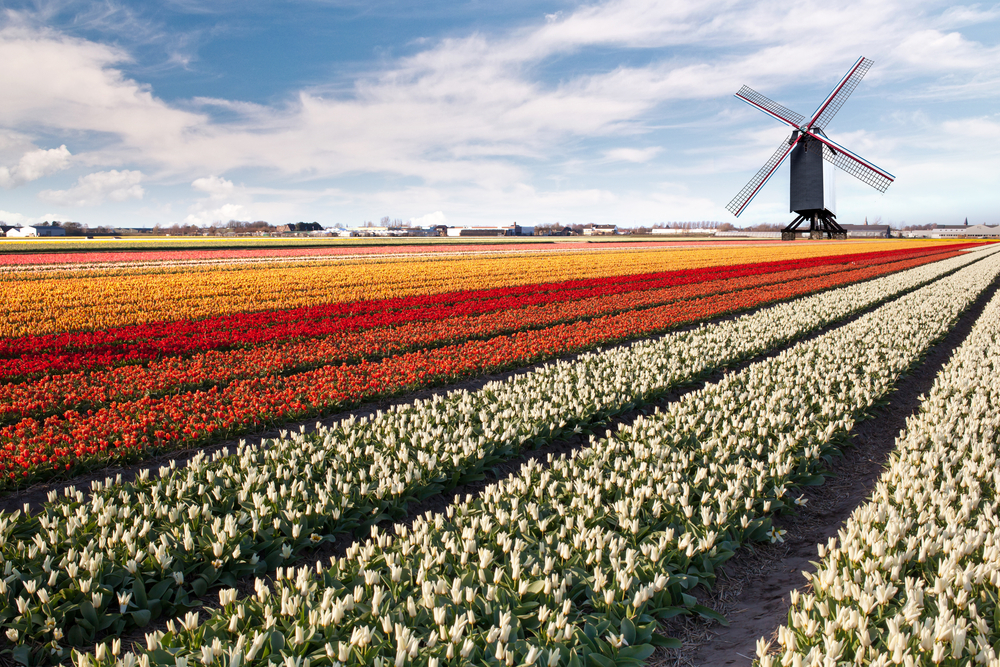The Dutch have given the world many things: windmills, stroopwafels, and questionable liquorice – but perhaps the most infamous is the world’s first financial bubble: tulip mania.
In the 1630s, tulip bulbs in the Netherlands were so valuable that people traded land, homes, and life savings for a single flower.
What started as a colourful garden trend quickly spiralled into economic madness.
A blooming obsession
Tulips arrived in the Netherlands from the Ottoman Empire in the late 16th century, and their vibrant colours–especially rare striped varieties–made them highly desirable.
The more unusual the pattern, the more valuable the bulb.

As the Dutch Republic’s wealth soared from maritime trade, so did its appetite for status symbols. Owning exotic tulips became a sign of sophistication.
It wasn’t long before people began buying and selling bulbs not just as flowers–but as investments.
READ MORE | Dutch tulip season: where to see the best tulip fields in the Netherlands in 2025
In taverns and backrooms, deals were made on slips of paper. Futures contracts became popular, allowing traders to speculate on bulbs they didn’t even own yet.
Prices soared. A single bulb of the legendary Semper Augustus variety was said to be worth the same as an Amsterdam canal house–a real estate equivalent that still raises eyebrows.
The bubble bursts
Like all good things inflated by hype, tulip mania didn’t last. In February 1637, during an auction in Haarlem, no buyers showed up. Panic ensued. Within days, prices collapsed.
Those who had invested fortunes were ruined. The speculative dream had wilted.

The economic fallout wasn’t as disastrous as some modern myths claim. The Dutch economy didn’t collapse — but the cultural embarrassment lingered.
The story of tulip mania became shorthand for irrational exuberance and out-of-control plays, like an old-time equivalent of an evening of ‘casinospellen spelen op Telegram’.
Still blooming today
Despite the crash, the Dutch never really fell out of love with tulips. Today, the Netherlands is the world’s largest producer and exporter of tulip bulbs, with colourful fields stretching across the Bollenstreek.

Visitors from around the world flock to Keukenhof Gardens each spring to see over seven million blooms. Tulip mania may have ended in disaster, but the flower’s appeal never faded.
Even now, tulips are woven into Dutch culture, from seasonal flower parades to international exports. And let’s be honest, a bouquet is much safer than betting your house on a single bulb.
Lessons from history
Tulip mania is still referenced today whenever markets overheat — from Beanie Babies to NFTs. It’s a reminder that when something beautiful becomes wildly overpriced, the crash can be just as spectacular.
READ MORE | How did tulips in the Netherlands become a thing?
It also proves that the Dutch were early adopters not just of finance, but of fabulous marketing. After all, who else could convince the world that a flower bulb was worth a mansion?
Want to dig deeper into the Dutch love of flowers? Check out why the Netherlands is still obsessed with tulips or explore the cultural quirks that shape Dutch identity.




